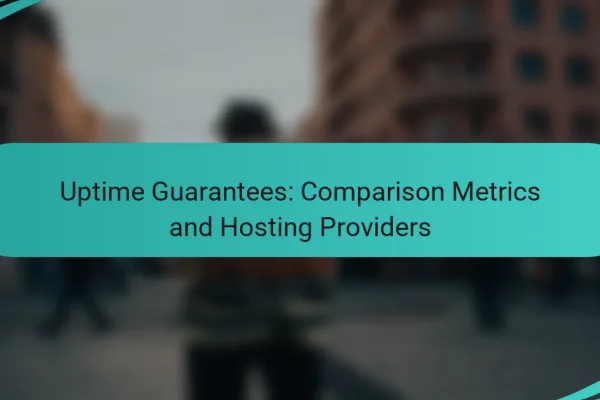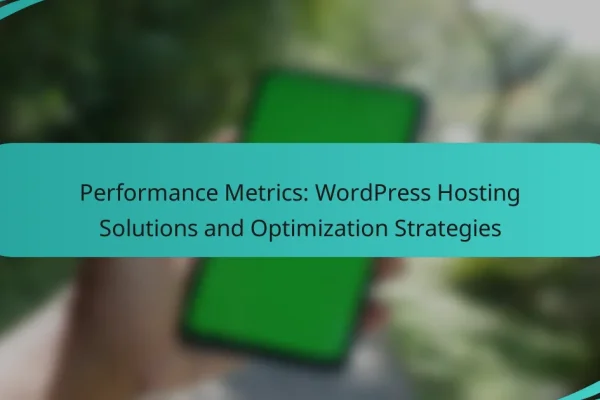What are the best hosting providers for performance in Canada?
The best hosting providers for performance in Canada focus on speed, reliability, and customer support. Key players include SiteGround, Bluehost, HostGator, DreamHost, and A2 Hosting, each offering unique features tailored to enhance website performance.
SiteGround
SiteGround is renowned for its exceptional speed and uptime, making it a top choice for Canadian users. It utilizes Google Cloud infrastructure, which ensures fast loading times and high reliability.
SiteGround offers features like SSD storage and a content delivery network (CDN) that significantly boost performance. Their customer support is also highly rated, providing quick assistance when needed.
Bluehost
Bluehost is a popular hosting provider that combines performance with affordability. It is officially recommended by WordPress, which speaks to its reliability and speed for WordPress sites.
With features like free SSL certificates and a user-friendly interface, Bluehost is suitable for both beginners and experienced users. Its performance is enhanced by optimized servers and a strong uptime record.
HostGator
HostGator offers a range of hosting plans that cater to different needs, from shared to dedicated hosting. Its performance is solid, with good loading speeds and uptime metrics.
HostGator provides unmetered bandwidth and free website migration, making it easy for users to switch to their services. However, users should be aware of potential upselling during the signup process.
DreamHost
DreamHost is known for its commitment to performance and customer satisfaction. It offers a 97-day money-back guarantee, which reflects confidence in its service quality.
With features like SSD storage and a custom control panel, DreamHost ensures fast loading times. It is particularly appealing for users looking for a hassle-free experience with a focus on performance.
A2 Hosting
A2 Hosting is recognized for its speed-oriented hosting solutions, featuring Turbo Servers that can enhance performance significantly. This makes it an excellent choice for high-traffic websites.
They offer a variety of plans, including shared, VPS, and dedicated hosting, catering to diverse needs. A2 Hosting’s commitment to performance is backed by their anytime money-back guarantee, providing peace of mind for users.
How does server speed impact website performance?
Server speed significantly influences website performance by determining how quickly content is delivered to users. Faster servers reduce loading times, enhancing user satisfaction and engagement.
Loading times affect user experience
Loading times are crucial for user experience, as visitors expect websites to load quickly. A delay of just a few seconds can lead to increased bounce rates, where users leave before the page fully loads. Aim for loading times under three seconds to keep users engaged.
To improve loading times, consider optimizing images, leveraging browser caching, and minimizing server response times. Regularly test your website’s speed using tools like Google PageSpeed Insights or GTmetrix to identify areas for improvement.
SEO rankings are influenced by speed
Website speed plays a vital role in SEO rankings, as search engines prioritize fast-loading sites. A slow website can negatively impact your search visibility, making it harder for potential visitors to find you online. Google, for example, considers page speed as a ranking factor.
To enhance your SEO performance, focus on reducing loading times and ensuring a smooth user experience. Implementing techniques such as content delivery networks (CDNs) and optimizing code can help improve both speed and search engine rankings.
What features enhance hosting speed?
Several key features can significantly enhance hosting speed, including Content Delivery Network (CDN) integration, SSD storage, and optimized server configurations. These elements work together to reduce latency, improve data retrieval times, and ensure a seamless user experience.
Content Delivery Network (CDN) integration
CDN integration helps distribute website content across multiple servers located around the globe. This reduces the distance data must travel to reach users, resulting in faster load times. By caching static content closer to the user, CDNs can improve performance, especially for websites with a global audience.
When choosing a CDN, consider factors such as coverage, speed, and pricing. Popular options include Cloudflare, Akamai, and Amazon CloudFront, which offer various plans to fit different business needs.
SSD storage advantages
Solid State Drives (SSDs) provide faster data access speeds compared to traditional Hard Disk Drives (HDDs). This speed advantage translates to quicker loading times for websites, as SSDs can process data in low milliseconds. For businesses, this can lead to better user engagement and lower bounce rates.
When selecting a hosting provider, look for those that offer SSD storage as a standard feature. While SSDs may come at a higher cost, the performance benefits often justify the investment, especially for high-traffic sites.
Optimized server configurations
Optimized server configurations involve settings and hardware choices that enhance performance. This includes using the latest versions of software, adjusting server resources based on traffic patterns, and employing caching techniques. Properly configured servers can handle more requests simultaneously, reducing wait times for users.
Consider working with hosting providers that offer managed services, as they often have the expertise to optimize server settings effectively. Regularly reviewing and adjusting configurations based on performance analytics can also help maintain speed as traffic fluctuates.
How to choose a hosting provider based on speed?
Choosing a hosting provider based on speed involves evaluating several key factors that directly impact website performance. Focus on uptime guarantees, speed test results, and customer reviews to make an informed decision.
Evaluate uptime guarantees
Uptime guarantees indicate the reliability of a hosting provider. Look for providers that offer at least 99.9% uptime, as this translates to minimal downtime and ensures your website remains accessible to users.
Consider the implications of downtime on your business. Even a few minutes of downtime can lead to lost revenue and damage to your brand reputation. Choose a provider with a solid track record of meeting their uptime commitments.
Check speed test results
Speed test results provide insight into how quickly a hosting provider can deliver your website to users. Use tools like GTmetrix or Pingdom to benchmark the loading times of various providers.
Look for average loading times in the low tens of milliseconds for optimal performance. If a provider consistently shows slower speeds, it may impact user experience and SEO rankings.
Consider customer reviews
Customer reviews offer real-world insights into a hosting provider’s performance and reliability. Check platforms like Trustpilot or G2 for feedback specifically related to speed and uptime.
Pay attention to recurring themes in reviews, such as frequent complaints about slow speeds or downtime. A provider with a high number of positive reviews regarding speed is likely a safer choice for your hosting needs.
What are the costs associated with high-performance hosting?
The costs of high-performance hosting can vary significantly based on several factors, including the provider, the level of service, and specific features. Typically, users should expect to pay for monthly subscriptions, setup and migration, and additional features that enhance performance.
Monthly subscription fees
Monthly subscription fees for high-performance hosting generally range from $20 to over $500, depending on the resources and services included. Basic plans may offer shared resources, while premium options often provide dedicated servers or cloud solutions with enhanced speed and reliability.
When selecting a plan, consider not just the price but also the performance metrics, such as uptime guarantees and speed benchmarks. Look for providers that offer scalable options, allowing you to upgrade as your needs grow.
Setup and migration costs
Setup and migration costs can vary widely, often ranging from $0 to several hundred dollars. Some hosting providers include free migration services, while others may charge a fee based on the complexity of the transfer.
It’s important to assess whether the provider offers assistance with migrating your existing site, as this can save time and reduce potential downtime. Always inquire about any hidden fees associated with setup to avoid unexpected expenses.
Additional feature charges
Additional feature charges can include costs for enhanced security, backups, content delivery networks (CDNs), and premium support. These features can significantly improve performance but may add $10 to $100 or more to your monthly bill.
Before committing, evaluate which features are essential for your business. Prioritize those that directly impact your website’s performance and user experience, and consider bundling options that may offer savings on multiple services.










